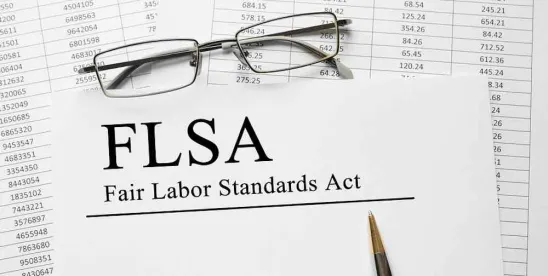On April 23, 2024, the U.S. Department of Labor (DOL) unveiled a new final rule that will significantly raise the minimum salary threshold to qualify for certain overtime exemptions under the Fair Labor Standards Act (FLSA), changing which employees will be entitled to overtime pay and affecting employer compensation structures.
Quick Hits
- The DOL final rule significantly raises the minimum salaries to qualify for certain FLSA overtime exemptions.
- The final rule provides for updates to the earnings thresholds every three years based on up-to-date wage data.
- The final rule calls for an initial threshold increase to take effect by July 1, 2024, and then the full increase to take full effect by January 1, 2025.
The Final Rule, “Defining and Delimiting the Exemptions for Executive, Administrative, Professional, Outside Sales, and Computer Employees,” will raise the minimum weekly salary to qualify for one of the FLSA’s three white-collar overtime exemptions to $1,128 per week, the equivalent of a $58,656 annual salary by January 1, 2025, a more than 50 percent increase from the prior threshold of $684 per week. The rule will further raise the annualized salary threshold for the exemption for “highly compensated employees” (HCE) to $151,164, up from $107,432.
The final rule provides for the minimum thresholds will update every three years based on up-to-date wage data. This will more than likely result in periodic increases absent a significant downturn in the economy.
Changes made by the new final rule closely follow the proposed rule published in September 2023 and are the first updates to the overtime exemption salary thresholds since 2019. The new rule will likely increase the number of nonexempt employees, potentially expanding the types of jobs that will be entitled to overtime pay under the FLSA.
White Collar Rule
The FLSA entitles employees, unless specifically exempted, to overtime pay for all hours worked in excess of 40 hours in one workweek. The FLSA contains three key white-collar exemptions: executive, administrative, or professional (EAP). Additionally, regulations currently provide the HCEs are exempt from overtime rules if they earn at least $107,432 per year and regularly perform one or more of the job duties covered by the EAP exemptions.
The new DOL final rule will make three key changes to the FLSA exemptions:
- Increase the minimum weekly salary to $844 per week, equivalent to $43,888 per year, on July 1, 2024 (calculations based on the 2019 methodology). That threshold is then set to increase on January 1, 2025 to $1,128 per week, equivalent to $58,656 per year, which is tied to the 35th percentile of salary in the lowest-wage Census Region (the South);
- Increase the HCE exemption total annual compensation to $132,964 per year on July 1, 2024 (calculations based on the 2019 methodology). That threshold will then increase on January 1, 2025 to $151,164, equivalent to the 85th percentile of full-time salaried workers nationally;
- Provides for future updates to the earnings thresholds every three years based on up-to-date wage data.
In a change from the proposed rule, the new rule does not apply the standard EAP exemptions to the U.S. territories of Puerto Rico, Guam, the U.S. Virgin Islands, and the Northern Mariana Islands. In a footnote, the DOL stated that it “will address these aspects of the proposal in a future final rule.”
Next Steps
The new final rule will likely face legal challenges as did the earlier 2016 Final rule that sought to raise the exemption threshold, which could delay implementation. If the final rule withstands those legal challenges, then employers may want to consider adjusting compensation structures for exempt employees earning more than $35,568 per year but less than the new EAP exemption minimum of $58,656. Otherwise, employers may want to consider reclassifying such employees.






 />i
/>i

